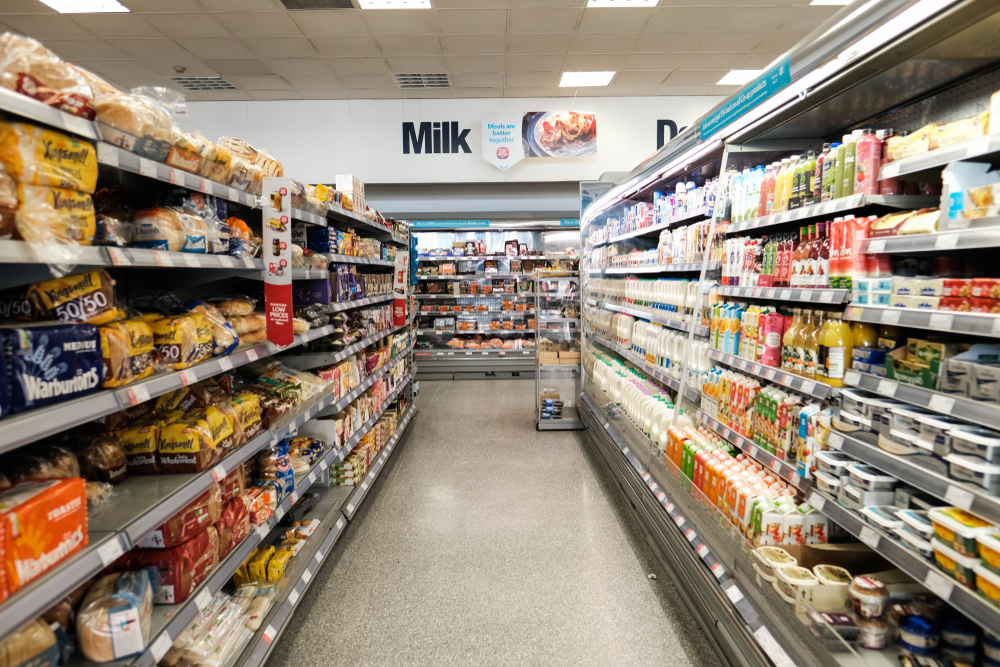Packaging waste recycling and recovery targets for 2020 through to 2022 are “broadly achievable” according to updated PackFlow reports published this week.
But, the reports caution that the targets will be “challenging especially in light of concerns relating to the potential impact of Covid-19 and the associated restrictions around this”.
The updated PackFlow reports have been published by packaging compliance specialist Valpak (part of the Reconomy Group), together with partners WRAP and the Industry Council for Packaging and the Environment (INCPEN).

Retailers a big sector in terms of business packaging obligations
The reports are expected to play a key part in decision making by the Department for Environment, Food and Rural Affairs on the level of packaging recycling targets for businesses until 2023 when a new expected producer responsibility system is intended to come into force.
Key findings of the report include that while there has been some change to where packing materials are arising coupled with an accompanied change in format type, broadly speaking this has had less of an impact on the recycling position than may have been feared.
And, in a statement in light of the coronavirus pandemic, the report partners noted that “the waste management sector has proved highly resilient and material has continued to move through the recycling process to end markets.”
Lockdown
Other points highlighted by the PackFlow partners include:
- Businesses deregistering due to insolvency as a result of lockdown restrictions could result in an oversupply of Packaging Waste Recovery Notes (PRN’s) due to decreased demand
- Plastics and glass have seen the biggest impact. A decrease in the amount of packaging placed on the market means a potential shortfall in PRNs in the short-term. For plastics, this is compounded by a higher proportion entering households which typically have a lower capture and recycling rate. However, for plastics a higher participation in local authority recycling schemes has outweighed any loss of collections in the commercial sector.

Targets proposed by Defra in 2019 in a consultation document
Targets in the consultation document from Defra are shown above as Table 6, the original can be seen on page 70 of the consultation document HERE.
Packflow materials
The PackFlow reports cover glass, metals, paper, plastic and wood and are designed to quantify how much packaging is placed on the UK market and subsequently recycled. Key findings by packaging material are:
Paper – will continue to deliver surplus PRNs to offset general recycling obligations. A small decline in the material placed on the market and a shift away from the higher participation commercial and industrial sectors towards household consumption is projected.
Glass – volumes of material recycled are likely to be very close to the 2020 obligation. Increased targets mean that compliance in 2021/2022 is likely to require an increased yield from existing systems or improved participation rates. Capture of non-accredited recycling would also help in meeting targets.
Aluminium – faces similar challenges to glass although there are some factors that may help to mitigate the situation including signs of improved participation in collection schemes and the increased capture of non-accredited recycling. New accredited energy from waste capacity will also have a positive impact.
Steel – the compliance position remains well balanced with a small surplus projected. As recycling rates remain extremely high, it is essential that a high proportion of reprocessors are accredited. The projected decrease in POM means surpluses may be eroded and 2022 may see a small shortfall.
Plastic – proposed increased targets may not be achievable. When the participation in recycling systems is kept constant, a small shortfall of PRNs is projected. If a small improvement in participation is modelled, a small surplus is projected. Much of this is not Covid-19 related but associated with broader changes in corporate and consumer behaviour.
Wood – Across all scenarios, the surplus of wood packaging relative to its target narrows in 2020 and then widens in 2021 and 2022.

Claire Shrewsbury of WRAP
Accurate
Commenting on the Packflow findings, Claire Shrewsbury, head of Government and communities at WRAP, said: “Having accurate, up-to-date information on the movement of materials in the economy is vital to inform packaging recycling targets and discussions around Extended Producer Responsibility, and the Packflow reports remain a key tool for both business, and governments… What these reports highlight perhaps most clearly is the robustness of the recycling sector in responding to Covid-19. The sector has faced challenges but responded to them by adapting and finding end markets.”
Teamwork
Paul Vanston, INCPEN CEO said: “Robust policy and national targets need to be well-informed, and the purpose of this project is to ensure the Government has full benefit of up-to-date packaging information. The teamwork across the materials sectors working on this project has been extraordinarily high quality. Particular thanks go to the Valpak team who have worked wonders to deliver the project reports in such short timescales.”
‘Grateful’
James Skidmore, head of consulting at Valpak, said: “I would like to take this opportunity to thank our co-sponsors WRAP and INCPEN together with all project stakeholders from across government and industry. We are extremely grateful for all the input we have received in such difficult conditions. We hope that the report’s findings will be helpful for all those involved in the process as well as the wider business community.”
Stakeholders
The updated reports, said Valpak, assimilated input from the full spectrum of stakeholders with involvement and support from Defra. Valpak also consulted with the Governments of the devolved administrations and their associated bodies, the Advisory Committee on Packaging (ACP), materials sector bodies, representatives of the waste management sector recycling industry and other Compliance Schemes .
Related link
To view the updated PackFlow reports – click here
The post PackFlow finds recycling targets ‘achievable’ appeared first on letsrecycle.com.
Source: letsrecycle.com Plastic


